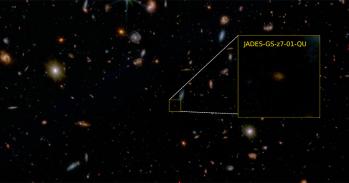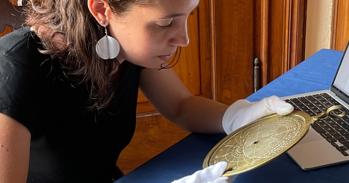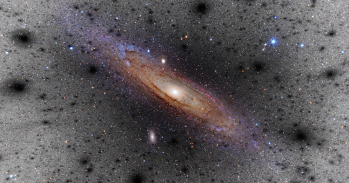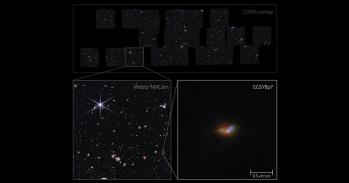
Study reveals chemical composites of exoplanet atmospheres 128 light years away. Scientists say techniques will “one day provide evidence of life beyond Earth”.
Study reveals chemical composites of exoplanet atmospheres 128 light years away. Scientists say techniques will “one day provide evidence of life beyond Earth”.
The really exciting thing is that, one day, the techniques we’ve developed will give us our first secure evidence of the existence of life on a planet outside our solar system
Ian Parry
Astronomers have conducted the first remote reconnaissance of a distant solar system, using new telescope imaging techniques to reveal the chemical composition of exoplanets orbiting a star 128 light years from Earth.
Project 1640 has harnessed new software and instruments to collect the first chemical fingerprints - or spectra – of the solar system’s four red planets.
Previous imaging studies had only managed partial measurement of the system’s outermost planet before light from the star itself blinded the technology.
Now, for the first time, scientists have been able to penetrate the starlight to read the unique light signatures of the chemical elements that make up the atmospheres of the four planets.
While the exoplanets proved “too toxic and hot” to sustain life as we know it, scientists believe that the techniques they are developing will one day give mankind the “first secure evidence of life on a planet outside our solar system,” according to co-author Ian Parry from the Institute of Astronomy at Cambridge.
A detailed description of the study will be published in The Astrophysical Journal.
Project 1640 uses the Hale telescope at the Palomar Observatory in California, and involves researchers from the American Museum of Natural History, CalTech, NASA, New York University and the Space Telescope Science Institution, as well as Cambridge.
Until now, blinding starlight – tens of millions to billions of times brighter than given off by planets – has made analysing exoplanets extremely difficult.
The new capabilities developed for Project 1640 allow the rapid characterisation of exoplanetary systems in a routine manner – the possibilities of which could well be providing the first evidence of the existence of extra-terrestrial life, say the scientists.
Ben Oppenheimer, from the Astrophysics Department at the American Museum of Natural History, said this new ability to go beyond starlight to read exoplanet atmospheres was like “taking a single picture of the Empire State Building from an airplane that reveals the height of the building but also a bump on the sidewalk next to it that’s as high as a couple of bacteria”.
Project 1640 does this by sharpening and darkening a star’s light. This technical advance involves the coordination of four major instruments – including the world’s most advanced ‘adaptive optics’ system, which can make millions of tiny adjustments every second to it’s internal mirrors for optimal imaging.
These techniques can reveal planets one to even ten million times fainter than the star at the centre of the image, after only an hour of observation.
Scientists have described some of the results from this initial study as “quite strange”, as the exoplanets are “redder”, emitting longer wavelengths of light, than celestial objects with similar temperatures – which could be explained by significant but patchy cloud cover on the planets, say researchers.
There is also an intriguing chemical imbalance in that the planets contain either ammonia or methane, but not both, running counter to basic laws of chemistry given the atmospheric temperatures.
The solar system’s star, HR 8799, is also very different to ours. It is five times brighter and produces about 1,000 times more ultraviolet light than the Sun. These factors could impact the chemical ‘spectra’ of the planets, possibly inducing complex weather such as dense carbon fog.
Researchers are already collecting more data on this system to look for changes in the planets over time, as well as surveying other young stars. During its three-year survey at Palomer, which started in June, Project 1640 aims to survey 200 stars within about 150 light years of our solar system.
This work is licensed under a Creative Commons Licence. If you use this content on your site please link back to this page.





